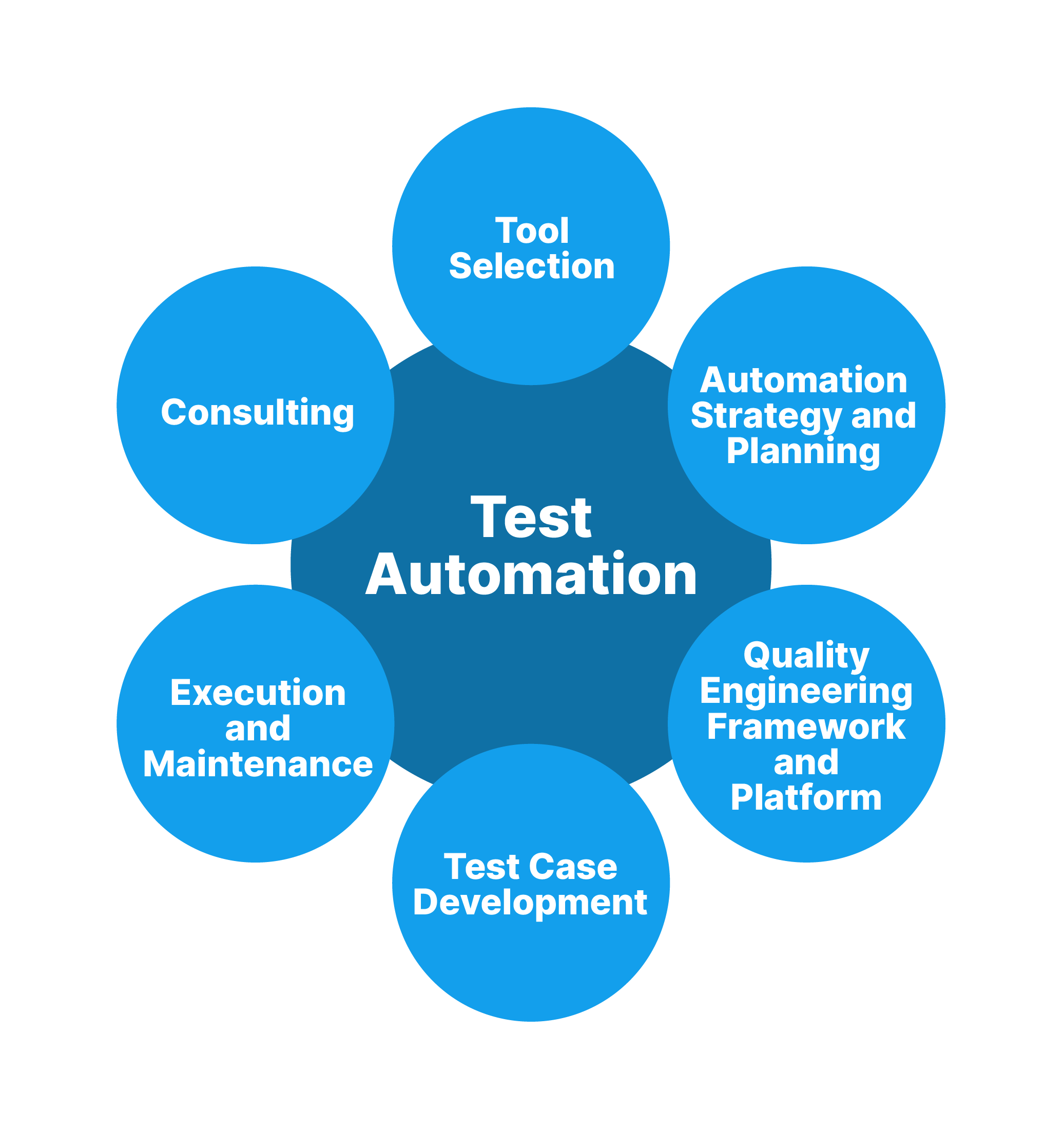The Best Guide to Implementing Automation Testing Successfully
The Best Guide to Implementing Automation Testing Successfully
Blog Article
Making Sure Success in Automation Examining: Secret Metrics, Difficulties, and Solutions Every QA Team Should Know
In the world of software application high quality assurance, the landscape of automation screening is ever-evolving, requiring a careful approach to make sure smooth procedures. The journey to mastering automation testing is paved with subtleties that require a keen eye for monitoring, evaluation, and continual enhancement. As the industry propels onward, the pursuit for ideal performance in automation testing stays a continuous quest, prompting QA teams to furnish themselves with the knowledge and techniques necessary for triumph.
Significance of Secret Metrics
Recognizing the importance of vital metrics is necessary for evaluating the performance and performance of automation testing procedures. Trick metrics function as measurable steps that offer beneficial understandings into various facets of the screening procedure, such as examination coverage, test execution time, issue thickness, and test situation effectiveness. By analyzing these metrics, QA groups can recognize traffic jams, ineffectiveness, and locations for improvement within their automation screening structure.
One important aspect of crucial metrics is their capability to track development and keep track of the total wellness of the screening process (automation testing). They allow stakeholders to make informed decisions based upon data-driven insights, which can lead to much more reliable testing strategies and much better source allowance. Furthermore, essential metrics can assist teams set sensible objectives, measure the success of automation initiatives, and demonstrate the ROI of automation testing efforts

Common Obstacles Encountered
Difficulties typically run into in automation testing procedures can considerably affect the general effectiveness and efficiency of QA groups. Among the major challenges is the selection of the appropriate test situations for automation. Not all test instances are ideal for automation, and selecting the wrong ones can result in wasted time and sources. Furthermore, preserving test manuscripts can be a daunting task, especially as the application undertakes constant changes. Test manuscript maintenance calls for continual updates and alterations to ensure they mirror the current functionality properly. One more usual difficulty is the preliminary financial investment required for setting up automation frameworks and devices. This can be an obstacle for some organizations, specifically smaller ones with restricted spending plans. Moreover, automation screening may not cover all elements of testing, such as use and customer experience screening, which still call for manual treatment. Overcoming these difficulties requires correct preparation, calculated test case choice, robust maintenance procedures, sufficient resources, and a clear understanding of the constraints of automation screening.
Reliable Solutions for Difficulties
To address the challenges encountered in automation screening, executing reliable solutions is vital for boosting the performance and performance of QA groups. One crucial remedy is read the full info here to invest in durable training programs for QA groups to guarantee they have the needed abilities to efficiently utilize automation tools. Training can connect expertise spaces, improve understanding of automation frameworks, and boost scripting capacities, eventually bring about much more effective test creation and implementation.
One more important service is to develop clear communication networks within the QA group and with various other stakeholders, such as developers and project managers. Reliable interaction helps in lining up expectations, sharing progress updates, and immediately addressing concerns or obstructions that may develop during the automation testing process.

Tracking and Evaluation Techniques
Executing efficient tracking and evaluation strategies is critical for guaranteeing the success and effectiveness of automation screening procedures. By using tracking tools, QA groups can track the efficiency of test manuscripts, identify traffic jams, and identify areas for enhancement. Real-time monitoring permits quick detection of problems, allowing rapid reaction and resolution. Furthermore, assessing test results and metrics offers important understandings into the high quality of the software being checked and the performance of the testing approach.
One trick technique in surveillance and evaluation is using control panels that consolidate appropriate metrics and KPIs in a visually obtainable style. These control panels use a thorough review of test execution standing, test insurance coverage, issue trends, and other important details. Consistently evaluating and analyzing these control panels can aid QA groups make notified choices, prioritize tasks, and enhance screening efforts.
Moreover, applying automated signals and alerts based upon predefined limits can improve proactive tracking and prompt treatment. By establishing notifies for performance inconsistencies or examination failings, teams can attend to problems promptly and stop them informative post from escalating. Overall, tracking and evaluation strategies play a vital duty in making certain the effectiveness and success of automation testing efforts.
Continuous Renovation Approaches
Enhancing the efficiency of automation screening procedures necessitates the regular improvement of techniques and techniques. One vital technique to enhancing automation screening procedures is to conduct normal reviews and retrospectives.

Final Thought
To conclude, it is crucial for QA groups to comprehend the vital metrics, obstacles, and solutions in automation testing to make certain success. By carefully keeping track of and examining data, applying efficient remedies to common challenges, and constantly enhancing approaches, QA groups can optimize their testing processes and deliver high-grade software application items. Sticking to these techniques will inevitably bring about a lot more efficient and reliable automation testing techniques.
By analyzing these metrics, QA groups can recognize traffic jams, inadequacies, and locations for renovation within their automation testing framework.
Furthermore, key metrics can aid groups established reasonable objectives, measure the success of automation campaigns, and show the ROI of automation testing initiatives.
Difficulties commonly run into in automation testing processes can significantly affect the overall efficiency and effectiveness of QA groups. Automation testing may not cover all aspects of screening, such as use and user experience testing, which still navigate here require manual intervention.In conclusion, it is essential for QA teams to comprehend the key metrics, challenges, and services in automation testing to guarantee success.
Report this page